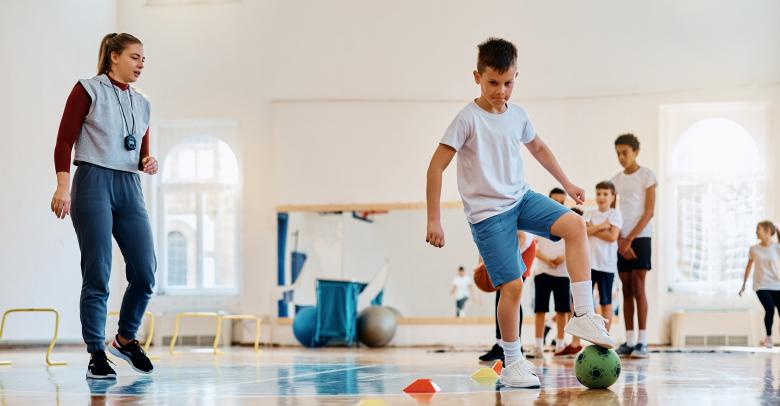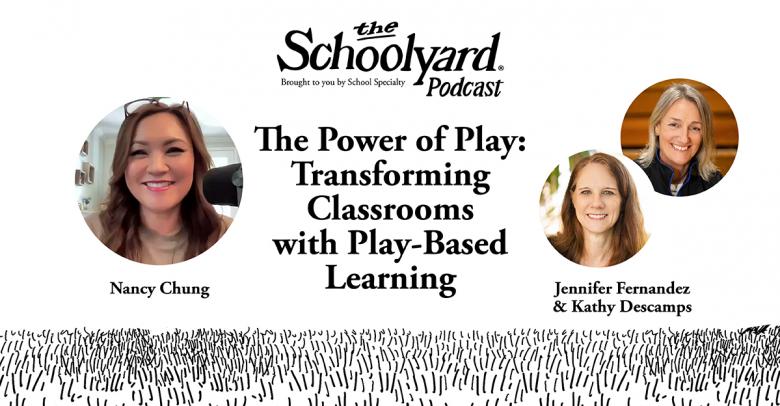If you are running a summer camp or are a leader/counselor looking for ideas to keep your campers active, you’re in luck! This blog is concentrated on just that.
No matter what the focus of your camp is, physical activity should be promoted throughout the day for all kids. Whether they are there to learn theatre, arts and crafts, reading, cooking, math, engineering, or coding, all children will benefit from at least 60 minutes of physical activity mixed in throughout the day. Academic skills aren’t the only things lost during the summer break. Without regular physical activity, fitness decreases at an alarming rate during the summer months. So, in order to keep ALL kids fit throughout the year, summer camps need a good combination of structured and unstructured physical activity time. Here are some ideas to integrate activity into each day at your summer camp.
Schedule 60+
Schedule at least 60 minutes of structured physical activity into the day. If it is a full-day camp, you might want to spread the fun into both morning and afternoon time slots. Schedule activity before, rather than after, breaks for nutrition. Studies show kids are more active that way.
Activity Breaks
Use short 3-5 minute activity breaks throughout the day. Have a good mix of activities to rotate through so they get a nice variety. Examples that work here: teach them a couple of line dances, practice a mini-workout routine, play a quick tag game, or check out the FitBreak app for a collection of fun, interactive, game-based activities. Then choose the activity randomly (try a spinner app like DecideNow to add to the fun) whenever they need to get their blood flowing, or at least one per hour of sitting.
Match the Theme
Do activities that complement the theme of the camp and reinforce the subject matter you are already teaching. Following are just a few examples. Obviously, there are hundreds of ways to do these, so use resources available to you and get creative!
Tech: If your camp is focused on technology, use HR monitors, activity monitors, and/or pedometers to learn about fitness and activity. There are also tons of apps that integrate technology and fitness. Here are just a few apps that focus on skills and/or fitness and could be fun to incorporate:
- BAMVideoDelay where kids do a skill, then view a slightly delayed video of themselves. Great for learning skills.
- Klikaklu is a photo hunt game where kids can use their phone’s GPS, camera, and image matching to create and conduct fun treasure/scavenger hunts.
- Use any QR code reader to allow your students’ phones to read QR codes that lead them to various activities on videos, photos, text, or websites.
Visual Arts: Incorporating physical activity into visual arts is a little tricky. However, if you have access to art exhibits or museums, taking a walk to and from them is a great activity break. Or walk the neighborhood and point out various types of art throughout (e.g. styles of architecture, garden art, landscape architecture, etc.).
Theatre Arts: Movement in theatre warm-ups and games is quite common. In addition to stretching and other movement activities you can do, here are a few additional ideas:
- “Slo-Mo/FFWD” where kids act out a scene, for example a sword fight, then do it in slow motion, followed by fast forward.
- “Sitting, Standing, Bending” is a game where three players onstage must keep one in each position, and when one changes, the other two must adjust. Try it this way first, then add “Standing, Walking, Running” or some other more active version!
- Allow each participant to lead a game of “Non-Elimination Active Simon Says” using an accent/dialect you call out.
- Allow groups to create a dance routine of the style of the play you are rehearsing. Have them teach their routines to other groups. Use these as breaks throughout the day.
Academic: There are so many types here, I’d have to get quite specific. However, walking field trips to various parks, ecosystems, libraries, companies, museums, etc. would be great activities. You could also incorporate the subject matter of your specific camp (e.g. names of planets, math equations, literary characters, types of rocks, dinosaur names, elements, parts of the cell, etc.) into tag and other games. Click here for a few samples.
Active Transitions
Campers are very seldom in the same space all day. Whenever they move from one area or class to another, lead them in fun and active transitions. One fun example is to play Follow the Leader. Move the line in a serpentine pathway, changing your locomotor skills and moving your arms as you go. Don’t keep your back to the children for long, but rather turn around and face them often by walking backwards (have the first child in line help be your safety monitor by warning you if there is something ahead!) Teach “waiting” games in case there is some down time while waiting for something to be ready, etc. Try Active Rock, Paper, Scissors or Straddle/Kick to keep them moving during these down times. Another fun way to travel is to sing songs with choreographed motions as you go.
As long as you keep physical activity as one of your priorities this summer, your camp will be not only be fun, but have lasting benefits for all your campers, as well.






Leave a Reply